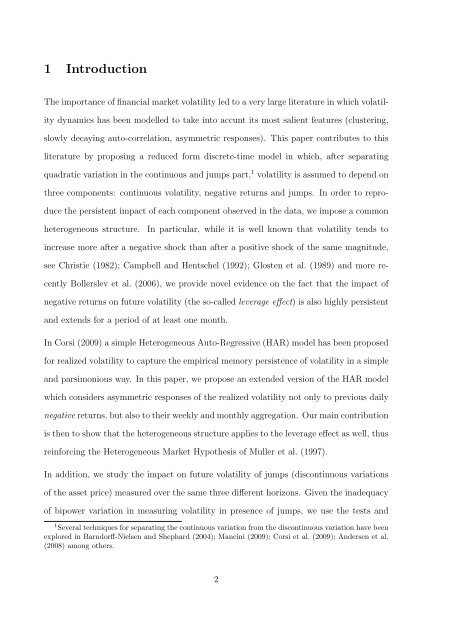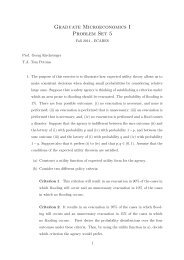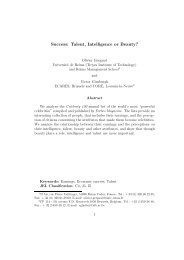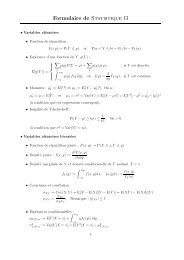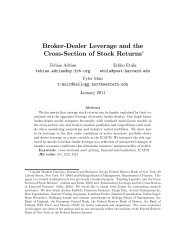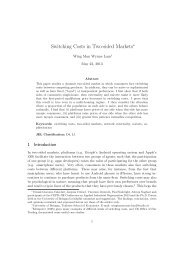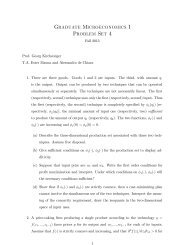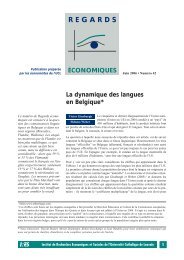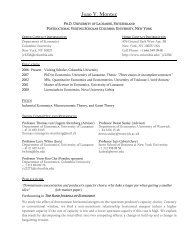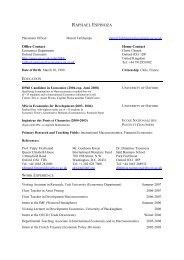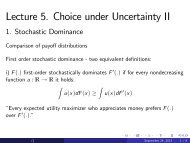HAR volatility modelling with heterogeneous ... - ResearchGate
HAR volatility modelling with heterogeneous ... - ResearchGate
HAR volatility modelling with heterogeneous ... - ResearchGate
Create successful ePaper yourself
Turn your PDF publications into a flip-book with our unique Google optimized e-Paper software.
1 IntroductionThe importance of financial market <strong>volatility</strong> led to a very large literature in which <strong>volatility</strong>dynamics has been modelled to take into accunt its most salient features (clustering,slowly decaying auto-correlation, asymmetric responses). This paper contributes to thisliterature by proposing a reduced form discrete-time model in which, after separatingquadratic variation in the continuous and jumps part, 1 <strong>volatility</strong> is assumed to depend onthree components: continuous <strong>volatility</strong>, negative returns and jumps. In order to reproducethe persistent impact of each component observed in the data, we impose a common<strong>heterogeneous</strong> structure. In particular, while it is well known that <strong>volatility</strong> tends toincrease more after a negative shock than after a positive shock of the same magnitude,see Christie (1982); Campbell and Hentschel (1992); Glosten et al. (1989) and more recentlyBollerslev et al. (2006), we provide novel evidence on the fact that the impact ofnegative returns on future <strong>volatility</strong> (the so-called leverage effect) is also highly persistentand extends for a period of at least one month.In Corsi (2009) a simple Heterogeneous Auto-Regressive (<strong>HAR</strong>) model has been proposedfor realized <strong>volatility</strong> to capture the empirical memory persistence of <strong>volatility</strong> in a simpleand parsimonious way. In this paper, we propose an extended version of the <strong>HAR</strong> modelwhich considers asymmetric responses of the realized <strong>volatility</strong> not only to previous dailynegative returns, but also to their weekly and monthly aggregation. Our main contributionis then to show that the <strong>heterogeneous</strong> structure applies to the leverage effect as well, thusreinforcing the Heterogeneous Market Hypothesis of Muller et al. (1997).In addition, we study the impact on future <strong>volatility</strong> of jumps (discontinuous variationsof the asset price) measured over the same three different horizons. Given the inadequacyof bipower variation in measuring <strong>volatility</strong> in presence of jumps, we use the tests and1 Several techniques for separating the continuous variation from the discontinuous variation have beenexplored in Barndorff-Nielsen and Shephard (2004); Mancini (2009); Corsi et al. (2009); Andersen et al.(2008) among others.2


